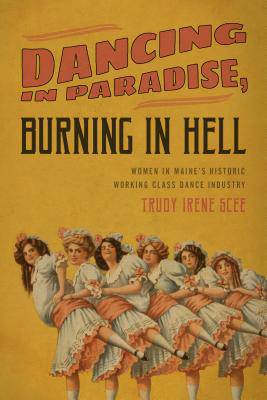
- Afhalen na 1 uur in een winkel met voorraad
- Gratis thuislevering in België vanaf € 30
- Ruim aanbod met 7 miljoen producten
- Afhalen na 1 uur in een winkel met voorraad
- Gratis thuislevering in België vanaf € 30
- Ruim aanbod met 7 miljoen producten
Zoeken
Dancing in Paradise, Burning in Hell
Women in Maine's Historic Working Class Dance Industry
Trudy Irene Scee
Paperback | Engels
€ 27,45
+ 54 punten
Omschrijving
Historian Trudy Irene Scee explores the dance industries of Maine, how they were effected by national events, and how events in Maine effected national trends. She explores the difficulties women faced in the early 20th century and how they turned to new forms of entertainment to make money and pay for food and shelter. The focus of the book centers on the 1910s through the 1970s, but extends back into the 1800s, largely exploring the dance halls of the nineteenth century (be they saloons with hurdy-gurdy girls and the like, or dance halls with women performing the early forms of taxi- and belly dancing), and includes a chapter on belly dancing and other forms of dance entertainment in Maine in the 1980s to early 2000s. The newest form of dance--striptease dancing--is not be examined specifically, but is discussed as it pertains to the other dance forms. The book forms a unique look at one segment of Maine history and is a terrific addition to the literature on women's issues.
Specificaties
Betrokkenen
- Auteur(s):
- Uitgeverij:
Inhoud
- Aantal bladzijden:
- 280
- Taal:
- Engels
Eigenschappen
- Productcode (EAN):
- 9781608935093
- Verschijningsdatum:
- 1/05/2016
- Uitvoering:
- Paperback
- Formaat:
- Trade paperback (VS)
- Afmetingen:
- 152 mm x 226 mm
- Gewicht:
- 408 g

Alleen bij Standaard Boekhandel
+ 54 punten op je klantenkaart van Standaard Boekhandel
Beoordelingen
We publiceren alleen reviews die voldoen aan de voorwaarden voor reviews. Bekijk onze voorwaarden voor reviews.











